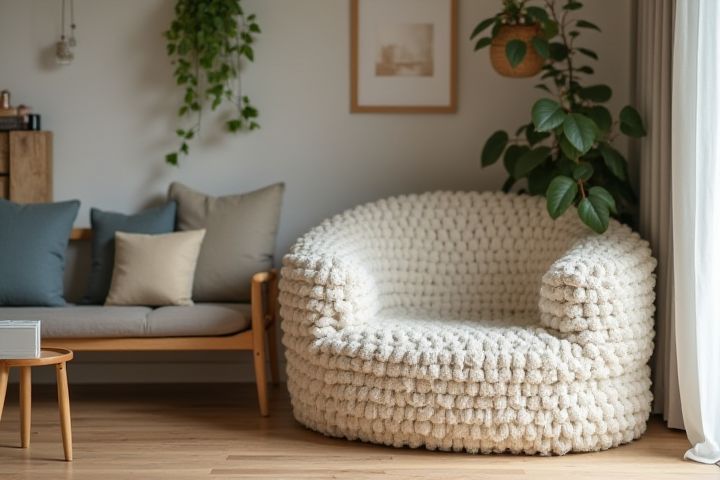
To declutter a small house effectively, start by identifying key areas that accumulate unnecessary items, such as closets, countertops, and storage spaces. You can use the "Four-Box Method"--label boxes for keep, donate, sell, and trash--to systematically sort through your belongings. Focus on one room or area at a time to avoid overwhelm; this allows you to track your progress and stay motivated. Incorporate multifunctional furniture, like ottomans with storage or wall-mounted shelves, to maximize space and maintain organization. Regularly review your items and practices, establishing a habit of minimalism to ensure your small house remains clutter-free.
How To Declutter A Small House
Prioritize essential items.
Begin by identifying essential items that serve a purpose in your daily life, such as clothing, kitchen essentials, and important documents. Aim to reduce your belongings by at least 30% in each category, focusing on quality over quantity. Create designated spaces for items you use frequently, ensuring everything has a home to minimize clutter. Consider implementing a "one in, one out" policy, where for every new item you bring in, you remove an existing item, maintaining your home's tidy condition.
Utilize multi-functional furniture.
Utilizing multi-functional furniture is a key strategy for decluttering a small house, as it maximizes space efficiency. For instance, consider a sofa bed which serves as both seating and sleeping space, perfect for accommodating guests without sacrificing room. Ottomans with hidden storage can double as coffee tables while keeping items neatly tucked away, adding to your home's organization. By incorporating these versatile pieces, you can create a more open and functional living environment, allowing you to optimize every square foot of your home.
Implement vertical storage solutions.
Implementing vertical storage solutions can significantly enhance the functionality of your small house. Utilize wall-mounted shelves to maximize floor space; for instance, 80% of your storage needs can be met by using shelves above furniture like beds or desks. Consider tall bookcases or cabinets that extend from floor to ceiling, which can provide up to 30% more storage without occupying extra floor area. Using hooks or pegboards can also optimize wall space, allowing you to hang items creatively and keep your living areas organized and clutter-free.
Regularly donate or sell unused items.
Regularly donating or selling unused items can significantly declutter your small house, creating a more spacious and organized environment. Consider setting a schedule, such as every three months, to evaluate your belongings and identify items you no longer use or need. You can donate clothes and household goods to local charities, benefiting your community while making room in your home. By utilizing online selling platforms, you can easily reach potential buyers, turning your clutter into cash and promoting a more minimalistic lifestyle.
Adopt a one-in-one-out policy.
The one-in-one-out policy is an effective strategy for decluttering a small house, ensuring that you maintain a manageable amount of belongings. For every new item you bring into your home, commit to removing one item, effectively controlling inventory and preventing clutter from accumulating. This approach not only promotes mindful purchasing but also encourages you to evaluate the value and necessity of your possessions. Over time, this habit can significantly enhance your living space, creating a more organized and calming environment.
Keep surfaces clear.
To effectively declutter a small house, focus on keeping surfaces clear by establishing designated storage for items. Use baskets and bins to contain smaller belongings, ensuring they're easily accessible yet hidden from view. Make it a habit to remove any objects that don't belong on countertops, tables, or other surfaces, aiming for a minimalist aesthetic. Regularly reassess your items and remove anything you haven't used in the past year to maintain a tidy and organized living space.
Store items by frequency of use.
Start by categorizing your belongings based on how often you use them; this might reveal hidden clutter. For instance, keep daily essentials like kitchen utensils and toiletries in easily accessible spots, while seasonal items such as holiday decorations can be stored in less prominent areas, like attics or closets. Consider utilizing clear bins or labeled boxes for organization, making it easier to locate specific items when needed. Remember, this method not only maximizes your space but also streamlines your daily routine, enhancing the overall functionality of your small house.
Label and categorize belongings.
To effectively declutter a small house, begin by categorizing your belongings into specific groups such as clothing, electronics, kitchenware, and books. Use bins or boxes to sort these items, ensuring each category is clearly labeled with the contents for easy access. Aim to reduce the number of items in each category by keeping only what you need or truly love, targeting around 20% of your possessions for removal. Regularly reassess these categories every few months to maintain a clutter-free environment, enhancing both space and organization.
Create a designated clutter-free zone.
Establishing a designated clutter-free zone in your small house is essential for optimizing space and promoting tranquility. Aim for an area of at least 20 square feet where only essential items reside, fostering a sense of orderliness. You can enhance this space with storage solutions like decorative baskets or shelves, which can hold frequently used items without overwhelming the area. By maintaining a strict policy of "one in, one out" for items you add, you ensure your clutter-free zone remains pristine and functional.
Set clear decluttering goals.
Setting clear decluttering goals is essential for maximizing space in a small house. Begin by identifying specific areas or categories, such as clothing, kitchen items, or sentimental possessions, and target one at a time. Establish measurable objectives, like reducing your wardrobe by 30% or clearing out a kitchen drawer each week, to maintain focus and track progress. This structured approach not only simplifies the process but also helps you maintain motivation as you create a more organized and functional living environment.
